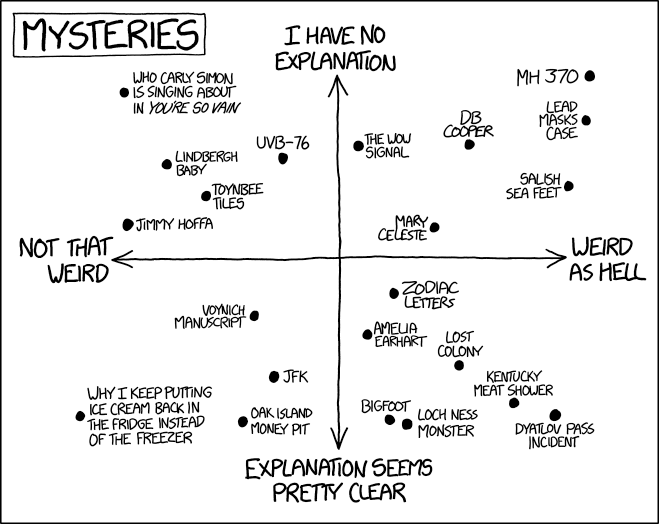Track Record
Rootclaim's Track Record
Syrian chemical weapon attacks (Ghouta and Khan Sheikhoun)
Opposition forces carried out the chemical attack in Khan Sheikhoun. (Preliminary analysis 52% likely, later adjusted to 96% likely and then and then 83% likely)
Who shot down Malaysia Airlines flight 17 over Ukraine on July 17, 2014?
Disappearance of flight MH370

Debris was found in several locations in the Indian Ocean, showing that the plane probably did not crash in the South China Sea as originally believed. Additional information has surfaced regarding Captain Zaharie’s use of his flight simulator to fly a route into the southern Indian Ocean ending with a rapid unpowered descent with no fuel reserves, similar to the final flight path of MH370, lending weight to the hypothesis that he crashed the plane deliberately. A report from 2019 suggests that the missing MH370's pilot was 'clinically depressed' and purposely killed all 239 on board.
Barry and Honey Sherman
What is the source of COVID-19 (SARS-CoV-2)?
Does the MMR (measles, mumps, and rubella) vaccine cause autism?
While this study is more robust than ever, its effect on the analysis is low, since the alternative hypothesis was a widespread conspiracy of falsified studies.
Who killed Hae Min Lee?
Did Pakistan know that Osama Bin Laden was hiding in Abbottabad?
Who killed Al Jazeera journalist Shireen Abu Akleh?
This statement confirmed the conclusion of Rootclaim that the IDF was the most probable party responsible for the death of Shireen Abu Akleh. This is the first time that the party found guilty by our analysis has admitted that they were likely responsible for what had occurred.
We're automating Rootclaim! 🤖
Rootclaim's team is currently fully dedicated to teaching AI models the art of probabilistic inference, and will likely not be publishing new analyses in the meantime. If this effort is successful, we will be able to provide accurate and transparent analyses of every public controversy immediately as it happens - a service we think humanity desperately needs.